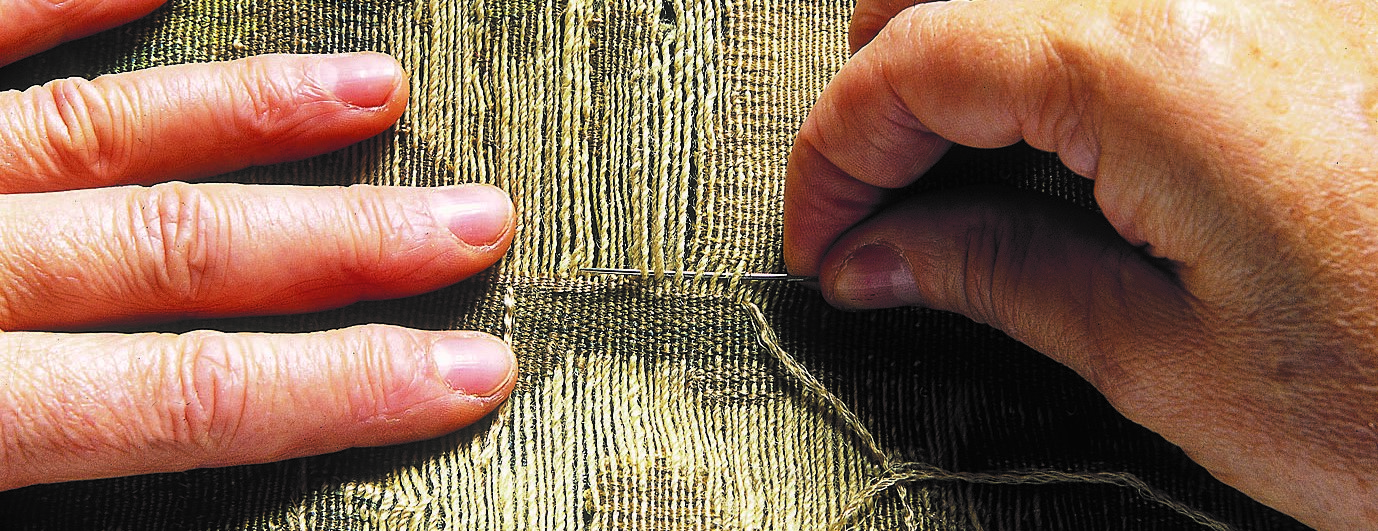CONSERVATION AND RESTORATION OF TAPESTRIES, PRECIOUS WOVEN WORKS OF ART
Woven in different periods of time to decorate the walls of royal palaces, castles and other noble and ecclesiastical residences, the delicate materials from which tapestries were made are subject to many factors that constantly change their structure and appearance. The Baroque tapestries from Ptuj Castle and the other tapestries in the Ptuj Museum are no exception to this. The textile conservation and restoration workshop of the Ptuj Ormož Regional Museum devotes much attention and countless hours of tireless work to the damaged historical tapestries from the 17th century, including those that were already restored in Vienna at the beginning of the 20th century.
Basic Stages of Conservation and Restoration Work on Historic Tapestries
The basic stages of conservation work on historic tapestries include disinsectization and vacuuming of the tapestries, washing with de-ionised water and neutral detergent (tenside), and rapid drying. The surface of the tapestries is then divided into quadrants using a light-coloured thread, the tapestries as a whole and the individual quadrants are photographed, and the tapestries are then mounted onto the rollers of the restoration looms. In an extremely complex restoration process, which usually takes several years, the damage is repaired by introducing new wool and silk tissue. Once all these procedures have been completed, the tapestries must be prepared for hanging by lining the back with a linen lining. During the conservation and restoration of the tapestries, the conservator-restorer uses various procedures, such as weft and warp reweaving and supportive stitching.
BASIC TAPESTRY WEAVING TECHNIQUES
Weft Reweaving
In areas where only the silk or wool thread has come out and the warp is preserved, the tapestry weaving technique (plain weave) requires the insertion of a thread corresponding to the original colour tone. The restorer weaves the weft in a slight arc and then pushes it to the woven rows with a small comb. In doing so, she must be able to find the appropriate colour, blend the threads and achieve the appropriate gradation of shades. Photographs of the quadrants of the tapestries at a scale of 1:1 and drawn templates showing the contours of the motif and the shading with gradated transitions of the colours are used as aids in the weaving.
Warp Insertion
In some places where the weft is damaged, the wool warp threads may also be broken. The restorer must therefore insert a new wool warp into the old weft channel. The process by which the weaver prevents the original from being torn by additionally securing the warps to temporarily sewn fabric strips is very demanding. Once the missing warps have been filled in with the new warps, the weft is inserted.
Supportive Stitching
Areas where the weft is partially abraded but not so damaged that it needs to be completely replaced are repaired by supportive stitching. In such areas, the light-coloured warp shows through the densely packed weft rows. Therefore, it is wrapped several times with weft yarn by the restorer, thus covering the light-coloured parts of the weft threads and preventing such areas from aesthetically spoiling the appearance of the otherwise harmoniously colour-coordinated surface of the tapestry.
THE DISPLAY CASE SHOWS VARIOUS WEAVING PRACTICE PIECES CREATED IN THE PROCESS OF TRAINING FUTURE CONSERVATOR-RESTORERS TO WORK ON HISTORICAL TAPESTRIES.

